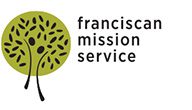Language and Culture: A Vibrant Relationship

Editor’s note: Overseas missioner, Anna Metzger, reminisces on her time in Bolivia while at home in Kentucky. She dives into the connections between language and culture, considering lessons learned from her journey into the Quechua language.
Most simply put, being home is hard. For years, I dreamed of living in Latin America, and just as my dream became true and began to feel real, I was brought back home to the States due to the unforeseen circumstances of a global pandemic. For three months now, I have wrestled with both feelings of thanksgiving and sadness. I am grateful to be home with my family and in a space where I am safe and able to serve, but at the same time, sadness breaks my heart because I am very far from the country that had already started to become my second home. As I grieve the loss of my first year on mission in Latin America, I cling to what makes me feel close to Bolivia.

I feel closest to Bolivia when I am speaking the Spanish or Quechua language, learning more about Andean culture and Bolivia history, and encountering alpacas along my route to work each morning. Yes, each morning, I pass a farm with alpacas grazing in the field, and when I pass by, joy envelops my soul as it reminds me of the Andes mountains where alpacas originated in South America. In the Andean region, the Inca people domesticated alpacas, used their wool for clothes, and viewed them as a gift from Pachamama. I could go on about alpacas, but they are not the focus of my reflection. What is the focus is the Quechua language, a native language first spoken in the Incan Empire!
Learning Quechua has been one of my very favorite parts of my mission journey thus far. I began with an excitement to learn a third language, but it has become more than just a language to me. Before moving to Bolivia, I heard that much of the culture and Spanish language in Bolivia is greatly influenced by the Native Quechua community. And boy is it true! Knowing the Quechua language has allowed me to better understand the world around me in Bolivia. It is kind of difficult for me to explain, so I will turn to some experts who have already beautifully expressed this idea…
In the podcast series, All My Relations, hosts, Matika Wilbur and Adrienne Keene, speak to Native Indians in the United States to discuss their experiences with Indigenous languages and the importance of promoting these languages (All My Relations. Season One, Episode 9: Can Our Ancestors Hear Us?). While these stories come from the United States, much of the concepts can also be applied to the Quechua Indigenous language. Please allow these words to sink in for themselves before reading my personal commentary below.
“If a person is able to speak Cherokee, they see a whole new concept, ideology, world-view that doesn’t exist in a white man’s world, a white man’s language.”
-Harry Oosahwee from Cherokee Nation“There’s just so many ideas that you can convey in Lushootseed that there is no way in English. And kind of vice versa there’s some things, some ideas, that we try to get across in English that we just have no way to say in Lushootseed.”
-Archie Cantrell from Puyallup“You cannot have language without culture. You must have a culture to have a language. Those two aspects of our ways of being are exceptionally important because you cannot have one without the other. … Language and culture are necessary for each other.”
–Henrietta Mann from Cheyenne Nation
I couldn’t have said it better myself. I am only a beginner in the Quechua language and am even still learning the Spanish language, but I already know these ideas to be true. My world view, way of thinking, and speech are stretched and grown by each language. There are phrases in Quechua that just can’t be fully expressed in the Spanish language, and there are phrases in Spanish that can’t be fully expressed in the English language. Which is why the relationship between language and culture exists! Some traditions, practices and beliefs that exist in the Quechua community, don’t necessarily exist in the modern day Spanish speaking city life of Cochabamba, Bolivia, and therefore cannot directly translate into the Spanish language (but it can influence it, which it has!). And the same goes for the difference in culture between different Spanish speaking areas and English speaking communities. These relationships and beautiful variations of culture and language exist all around the world!
Without my pursuit of languages, this vibrant relationship between language and culture would have been a foreign concept to me. I am beyond grateful for the opportunity and drive I have to learn languages, and therefore learn about cultures different than my own. So, as I spend each day at home in Kentucky, waiting to return to Bolivia, I choose to continue speaking in Quechua and Spanish and watching documentaries and reading books to further educate myself about the country I will soon again call home.
Challenge: Learn a new language! ☺ But also, listen to the podcast mentioned in this blog. Stretch yourself to learn about the Native history of the United States. Check out the podcast, All My Relations, and listen to the episode mentioned above.
Special thanks to fellow missioner, Sabrina, for recommending the podcast to me!



